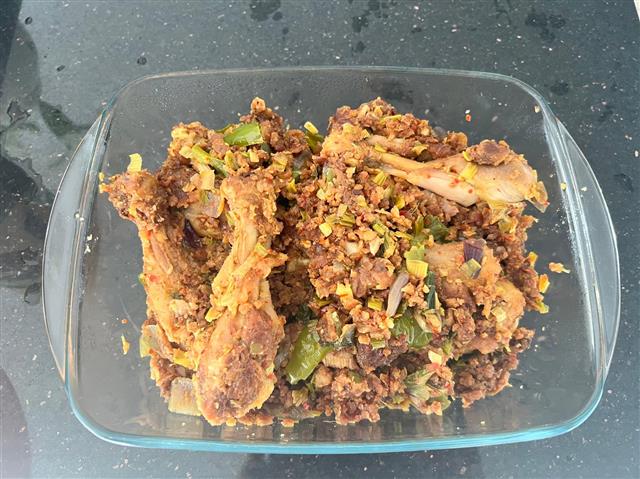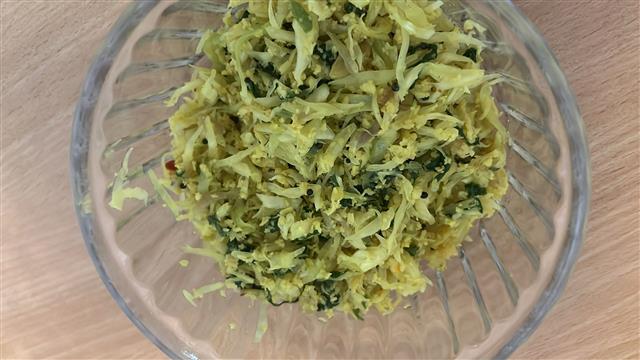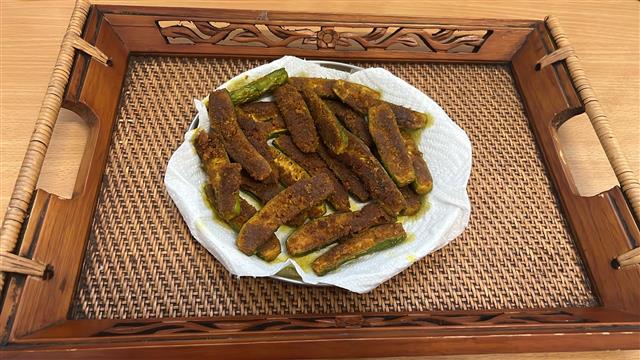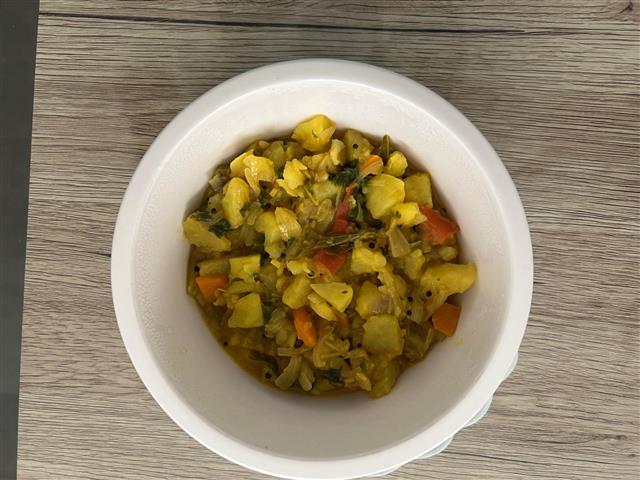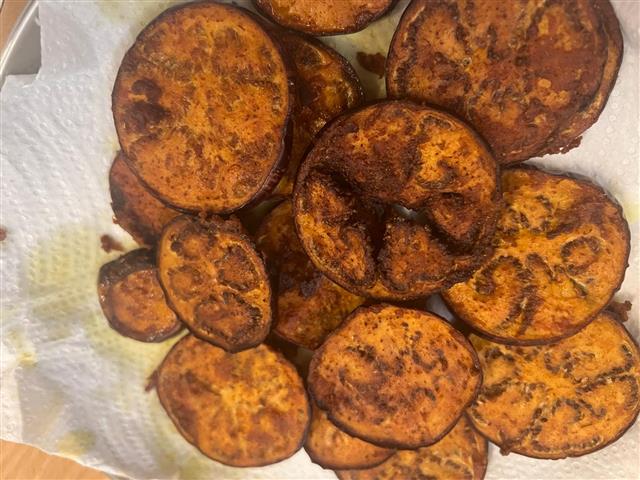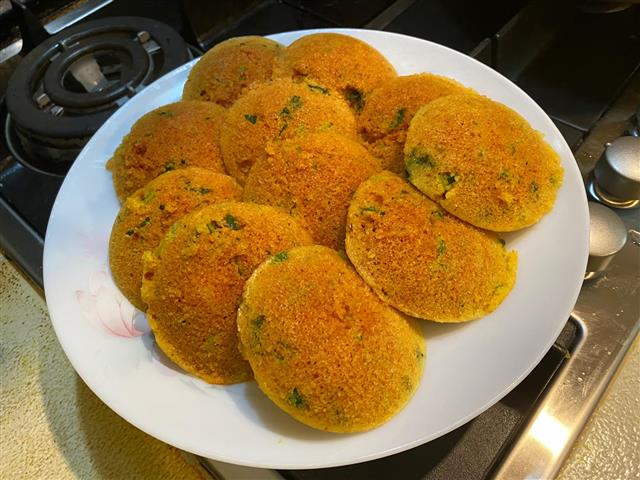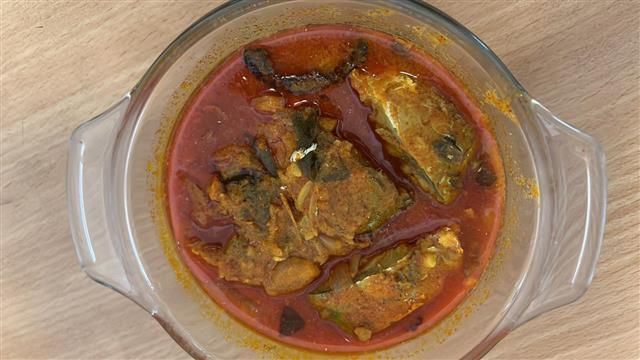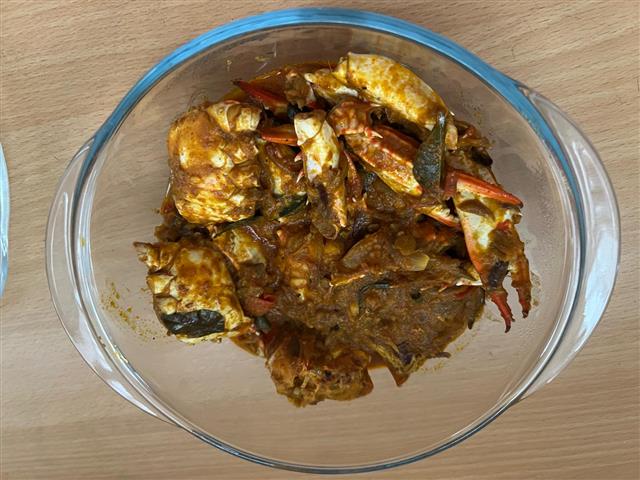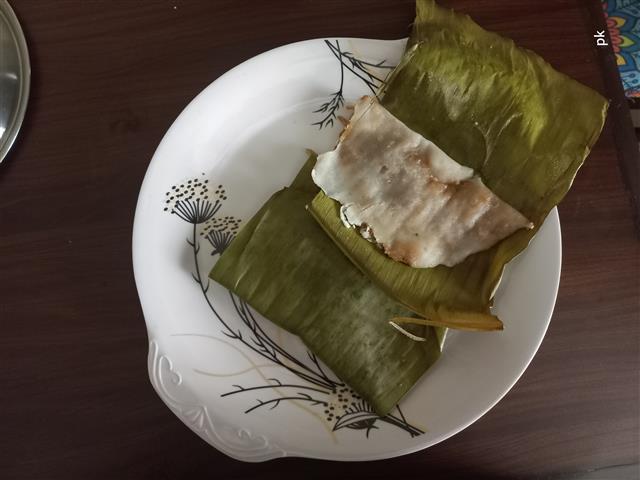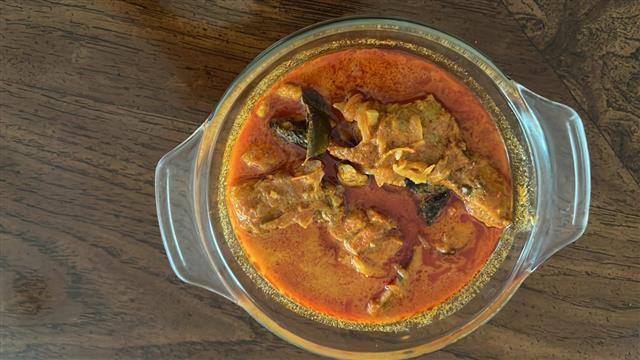
Puttu
(4 reviews)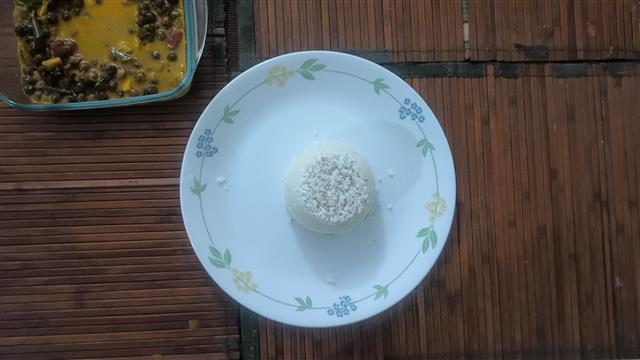
Kerala puttu is one of the easiest and simplest South Indian breakfasts to make, while being filling, delicious, and nutritious. I usually go for puttu on those days when I am too lazy to cook or short on time. Made with just three ingredients, you can make it in under 20 minutes.
Ingredients
Directions
- In a large mixing bowl, add the roasted rice flour and salt. Mix well to ensure the salt is evenly distributed.
- Slowly add water, a little at a time, while mixing with your fingers. The dough should come together into a crumbly texture, but not too wet or sticky. The consistency should be like damp sand—moist enough to hold its shape when pressed, but not soggy. You may need slightly more or less than the 1/3 cup depending on the flour.
- Grease the inside of your puttu maker with a little ghee (optional). Start by layering grated coconut at the bottom of the cylinder. This gives a nice flavor and texture to the puttu.
- Begin layering the rice flour mixture and coconut alternately in the puttu maker. The top layer should be rice flour, and ensure there are no air pockets in between the layers.
- Place the filled puttu maker in a steamer or a pot with boiling water. Cover and steam for 8-10 minutes. You will know it’s done when you can smell the rice and the puttu has firmed up.
- Carefully remove the puttu from the steamer. Serve hot with coconut milk, curry, or even sugar, depending on your preference.
- Enjoy your perfect Puttu!
Cooking Tips
When adding water to the rice flour, add it gradually by sprinkling. When there is too much water, the puttu will be dense.
Do not pack the flour tightly in the puttu maker. Only when it is loosely packed can there be proper air circulation.
Make sure the steam comes properly through the top holes.
The steamer should be preheated before placing the puttu maker, as it will otherwise cause uneven cooking.
Do not steam on low heat, as there is a chance that the puttu will get undercooked in the middle portion.
How to Serve
Kerala Puttu can be paired with any gravy curry. It tastes best when served along with kadala curry or black chickpea curry. For a sweeter version, it can be enjoyed with jaggery and banana.
The Story Behind Puttu
Puttu, or steamed rice cake, is a traditional breakfast dish from Kerala.The name "puttu" comes from the Tamil word, which means "portioned" or "to put together," referring to how the rice flour and coconut are layered in the cylindrical steamer. This ancient dish has been nourishing families for generations. This traditional Kerala breakfast is also well-known in other South Indian states like Karnataka, Tamil Nadu, and even some parts of Sri Lanka. In olden times, puttu was steamed in bamboo logs, which gave the dish an earthy fragrance.
Pro Tips for Perfect Results
Using warm water can make the puttu softer. The amount of water required will depend on the quality of rice flour
If you are using store-bought rice flour, roasting it lightly can give a better aroma and also help to remove the raw flavour.
To enhance the flavour further, you can add a bit of the grated coconut directly into the moistened rice flour.
To get soft Puttu, the amount of rice flour to water ratio is important. To check this, gently press a small portion of the flour between your palms.
While adding water to the flour, keep breaking all the tiny lumps with your fingertips. Or you can place the lumps by grinding the mixture too. But make sure to grind in batches, using the pulse option.
Puttu Variations
For sweet Puttu, spoon in 2 tablespoons of jaggery powder into the rice flour. Then add cardamom powder. Serve with ghee and banana.
Ragi Puttu—For a healthier version, replace half the rice flour with finger millet flour
Wheat Puttu, in which we use whole wheat flour instead of rice flour.
Jackfruit Puttu, in which we place ripe jackfruit pieces into the rice flour before steaming.
Chicken or Mutton Puttu, in which we layer spiced meat masala between rice flour.
Storing & Reheating Tips
Puttu tastes the best when consumed fresh. Leftover puttu can be stored for up to 2 days wrapped in banana leaves or foil in the refrigerator. For reheating, steam again for 2-3 minutes or microwave with a damp cloth. Puttu cannot be frozen.
Common Mistakes to Avoid
Do not add more water than necessary, as it will clump together. The puttu will be very dense and heavy because of over-wetting.
Make sure it is steamed properly. Otherwise, it will have a grainy texture and an uncooked taste.
Avoid using stale coconut, as it will adversely affect the texture and flavour.
Frequently Asked Questions
Can I make puttu without a puttu maker? Yes, use an idli steamer or make it with a perforated container inside a regular steamer.
Why is my puttu hard? Puttu becomes hard when there is insufficient water in the flour mixture or over-steaming.
How do I know when puttu is ready? When steam flows consistently through all top holes for 2-3 minutes.
Equipment Needed
Puttu maker or puttu kutti or coconut shells with a hole Puttu steamer: Large pot or pressure cooker base Fine-mesh sieve Large mixing bowl
